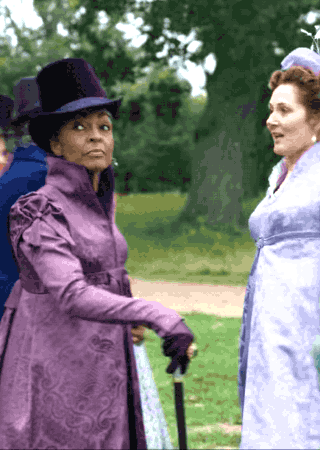
Have you caught Bridgerton fever? I have!
I absolutely adored the glimmering gowns, character-defining color palettes, and strong aesthetic voice of costume designer Ellen Mirojnick. And so, naturally, I’ve been inspired to create a Regency footwear collection for Fall 2021, and that means lifestyle photoshoots, yay!
And lifestyle photoshoots mean sewing, yay!
First up, Lady Danbury and her fabulous burgundy, wine, and purple wardrobe. She wears a couple pelisses and I’ve always loved these Regency garments. Whereas there are two sparkly non-HA evening gowns in the works, I wanted to go a little more accurate with the pelisse.

I splurged on an intensely gorgeous burgundy figured silk taffeta from Silk Baron.
I’m using the Black Snail 1815 Empire Spencer or Redingote #0319. I got the PDF download and spent a lot of scotch tape assembling it. There are some confusing parts of the skirts pattern assembling that require cutting and extending (to save on printer paper, I guess). There are also some confusing match marks, or lack thereof, but generally speaking the pattern pieces match up well, fit, and are historically accurate in shape.
I made some changes to the pattern. The first was to fold back the overlap skirt front so that the opening is center front instead of on the side. The second was to add a grown-on lapel to the collar, which is easier than you might think and kindof fun. Just draw that shape right on there as big or small as you want.

Comments
Post a Comment